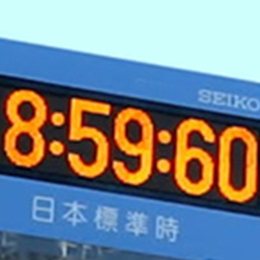We typically use the word “time” (as measured by a clock or watch) to refer to specific instants in the flow of time, or the length of time between two specific instants.
When it comes to the question “What is time?” however, things are not so simple. There are many different angles from which we can approach this theme, which vary greatly between the different fields of psychology, biology, philosophy, natural sciences, physics, cosmology, and so on. There have also been numerous different definitions and ways of thinking about time in the various different eras of history, and so it is difficult to give a sweeping, generalized explanation.
Here, over the course of three separate parts, we will approach the question “What is time?” from the respective viewpoints of five of the below fields; and attempt to summarize, in an easily understandable manner-the representative ways in which time is considered in each field:
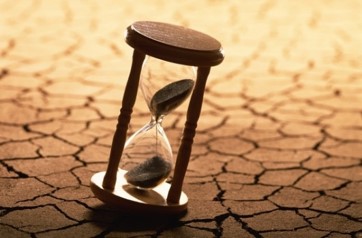
・Time as it Flows in the Mind and Body (Biological Time)
・Changes in Religious and Philosophical Views of Time
・Newton’s “Absolute” Time (Flows Constantly Everywhere)
・Einstein’s “Relative” Time (Expands and Contracts)
・The Relationship Between Space and Time
Time as it Flows in the Mind and Body (Biological Time)
Why does Time seem to pass Faster as We Grow Older?
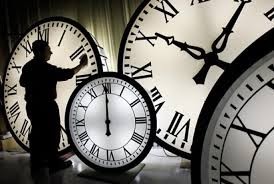
Many adults often say, with regard to their perception of time, that although time felt long when they were children, since reaching adulthood it feels as though time passes by very quickly.
One reason given to explain this is that our psychological perception of time is determined by the differences in the fraction of our total lifespan that a given length of time represents. For example, let us compare two people, aged 7 and 70. A period of one year to a child of age 7 is equivalent to 1/7 of their life so far. For an adult of age 70, however, one year is equivalent to only 1/70 of the life they have lived up until that point. The common explanation is that it is the difference in these ratios that determines our mental perception of the passage of time.
In addition to this, children experience new events on a daily basis, meaning that many memories remain fresh in their minds. Adults, on the other hand, are continually repeating experiences that are similar to those already had in their past, which means that their brain’s hippocampus does not memorize each and every thing that they experience. This is another commonly given reason as to why for adults, a year seems to pass before we realize it.
The Existence of Our Internal Biological Clocks
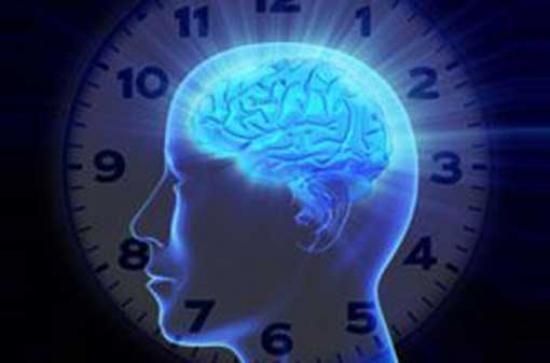
For a long time, humans and other animals, have lived based on a daily cycle of waking up in the morning, working during the day and sleeping at night. The lifestyle rhythm of this one-day, 24-hour period is ingrained into our brains and our bodies.
There is a function that plays the role of a clock within the bodies of living creatures. We call this internal clock our “biological clock.” For example, it is said that even if they spend several days in an isolated room with no clock, both humans and animals sleep and wake up in regular manner based on a periodic cycle of roughly 24 hours. The reason for this is that all living things have the capacity for adaptability, the natural instinct to adapt to their environment and increase their chance of survival, in order to preserve their seed and perpetuate their species.
What Determines the Period of Our Biological Clocks?
So, what is the standard within our internal biological clocks that generates the period and keeps us “ticking” away regularly, like the pendulum or balance in a mechanical clock? The answer is the working of the proteins inside our cells, which are accumulated and broken down over a period of one day, or 24 hours. The amount of protein in our cells increases when we engage in morning activities, and decreases when night comes. This natural increase and decrease of proteins over a period of around 24 hours is what our biological clocks use to measure a 24-hour daily cycle. Based on this mechanism, humans and other living creatures generate a rhythm of hormone excretion that enables us to wake up at a certain time in the morning and sleep naturally at night.
Recent studies of bacteria have shown that the proteins in bacteria also go through a repetitive 24-hour periodic cycle of phosphorylation (in which phosphoryl groups bond to proteins) and de-phosphorylation (in which they are removed).
Biological Time for Animals
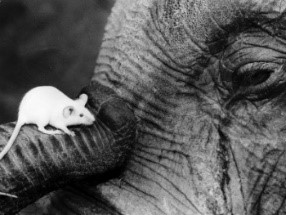
It is said that the “tempo” (or speed) with which time passes differs between animals. An animal’s size and heartbeat are closely related to its life expectancy. Generally, the bigger and heavier an animal is, the longer it will live. The bigger an animal’s body is, the slower its heart rate.
For example, a mouse’s heart beats approximately once every 0.1 seconds. A human being’s heart beats around once every second, while an elephant’s heart beats about once every three seconds.
Apparently, the amount of energy consumed by one heart beat is the same for all animals, and an animal’s life expectancy equates to approximately 1.5 billion heart beats. Therefore, a mouse’s lifespan is relatively short, while an elephant’s is relatively long.
As a result of this, the greater an animal’s bodyweight is, the longer physiological period of time for its blood circulation, cycles of digestion and excretion, growth and cell life will be. Consequently, we can say that bigger animals live long lives at a slower tempo.
The reason for this is not known for sure. One theory has it that internal time for a given animal in terms of its heartrate period and lifespan, etc., is proportional to the 1/4th power of its bodyweight. This “1/4th power” is difficult to understand, but explained in other terms we can say that if an animal’s bodyweight is 16 times greater, its time will be twice as long (i.e. 24 = 2 x 2 x 2 x 2 = 16). If its bodyweight is 81 times greater its time will be three times as long (i.e. 34 = 3 x 3 x 3 x 3 = 81), and if its bodyweight is 256 times greater its time will be four times as long (i.e. 44 = 4 x 4 x 4 x 4 = 256).
The idea that—in the evolutionary process of each species of animal—the “predesigned” length of an animal’s life and possibly also its perception of the length of a single day are different depending on its size and bodyweight is an extremely interesting and intriguing prospect.
Changes in Religious and Philosophical Views of Time
Concepts of Time in Religion since Ancient Times
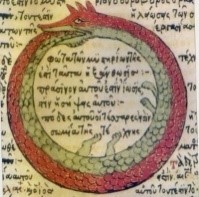
In the religions of many ancient civilizations, including the ancient Egyptian, Greek and Mayan civilizations, the world-as created by the gods-followed a repetitive, periodic cycle of creation, existence, end (or “apocalypse”) and destruction. Since this cycle reiterates infinitely, it was considered that both reversals and recurrences were possible, in the sense of time following the same path again and again, or that time continued in this way for all eternity.
In Indian philosophy and oriental thinking, too, as in religions such as Buddhism and Hinduism, there is a similar concept called reincarnation, whereby the souls of the dead that have passed on are reborn continuously, again and again.
A partially circulatory view of time can also be seen in Judaism. In Christianity, however, the coming of Jesus Christ to our world, his death and resurrection are held to be irreversible and unrepeatable in accordance with divine revelation.
However, during the 10th century and earlier, when the spread of Christianity was still limited, people had no other tools for measuring the passage of time than primitive clocks (such as sundials, water clocks and combustion clocks), and everyday people’s awareness of time was still weak and limited. Their concept of time was that it was something that repeated on an annual basis, with the changing of the seasons and the yearly harvesting of the crops.
From around the 11~12th centuries onwards, Christianity came to influence the lives of everyday people. The circular view of time repeating itself was rejected, and people’s concept of time changed. Time was something linear, that was ruled over by God, and which advanced perpetually forwards towards “the End.”
Dōgen Zenji’s Theory of Time
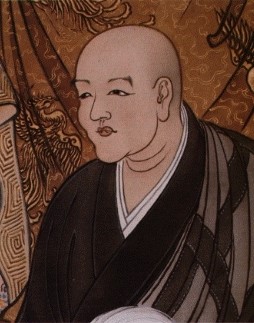
A famous Japanese person who preached regarding the answer to the question of “What is time?” was Dōgen Zenji, a Zen Buddhist monk and founder of the Sōtō school of Zen, who was active during the Kamakura Period. In the Uji volume of his Shōbōgenzō essays (literally meaning “Treasury of the True Dharma Eye”), Dōgen wrote the following.
“At some times (Bhudda) stands on the top of tall mountains; at other times, he goes across the deep sea floor...pine trees and bamboo also have time, and so do we... Existence is time, and time is existence... If time ceased to exist, then so too would the mountains and the seas... To have time, is to be alive...”
(Note: translated from a transliteration of the original text into spoken Japanese)
In other words, Dōgen’s Uji (or Arutoki) says that time and space-or time and existence-are constantly as one, and that our lives are always (and only) in the here-and-now, in this current time and place. Dōgen considered even static, non-moving plants like pine trees to be constituent parts of time and space; and preached that life is about living in this present time and place, and embracing life by becoming one with the Bhudda through rigorous religious training (shugyō).
The Revolution of Time Awareness, Separated from Religion
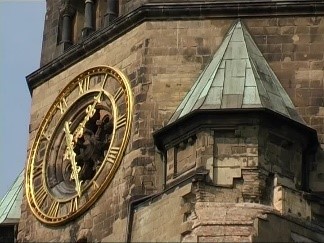
At the beginning of the 14th century, the mechanical clock was invented in Europe. By the 15th and 16th centuries, mechanical clocks were built not only at churches and monasteries, but at the plazas of town halls and town marketplaces in every region, and more accurate, precise mechanical clocks began to gain widespread popularity.
It was only then that there was a change from the seansonal time system-of equally dividing day and night as determined by the times at which sunrise and sunset occurred-to a constant time system of timekeeping; and common citizens began to gain a finer awareness of time and began living in measured units of time, by the day or by the hour.
This was truly a revolution of awareness with respect to time, shifting away from the idea of time being governed by God to a more objective view of time that was detached from religion. With the erection of clock towers in town squares, time passed from the hands of God into those of the merchants who dominated the free cities, thereby becoming a tool for controlling the economies, societies and politics of those regions.
Time as Considered by the Ancient Greek Philosophers
The ancient Greek philosopher Plato apparently thought that the movements of the planets advanced the passage of time, like a giant galactic watch spring. His student Aristotle, however, argued that time was unrelated to the movements of the planets. He defined time as being determined by numbers in the ordering of such movements, in other words, the chronological order in which things occur. This was still around the 4th-5th centuries BC.
Later, many philosophers began to regard time (along with space) as being the most basic and fundamental framework for human beings to exist and be consciously aware of things; and to believe that all things flowed from the past to the present, and on into the future. There were also some who believed that time was not something that simply flowed on externally, unrelated to the human mind, but rather that time was connected to the workings of the mind, focusing primarily on the present, but also including past memories, and hopes and expectations for the future.
Time as considered by Philosophers since the Time of Newton

We will cover the ideas of Sir Isaac Newton (a British scientist who was active during the latter half of the 17th century) regarding ”absolute time and space” in detail later on. In simple terms, his concept was that time flows constantly, at the same speed at all times, everywhere.
However, several philosophers disagreed with this. The most famous of these was Immanuel Kant, a German philosopher was active during the latter half of the 18th century. Kant believed that time and space were not absolute, but changed according to the subjective observations, intuition and sensibilities of humans; and that it was possible to recognize and experience phenomena occurring in various times and spaces.
Reference Literature
・Dōshite jikan wa nagareru no ka (Why Time Flows),Toshifumi Futamase, PHP Shoseki
・Newton Supplement: What is Time?, Newton Mook, Newton Press
・Zukai zatsugaku: Jikanron (Misc. Studies w/ Pictorial Explanations: Theories of Time), Toshifumi Futamase, Natsumesha
・Zō no jikan, nezumi no jikan (Time for Elephants and Time for Mice), Tatsuo Motokawa, Chūkō Shinsho
・Dōgen Zenji no jikanron (Dōgen Zenji’s Theory of Time), Tairyū Tsunoda, Komazawa University
・1-byō tte dare ga kimeru no? (Who Decides How The Length of 1 Second), Masami Yasuda, Chikuma Primer Shinsho
Related exhibits and artifacts




